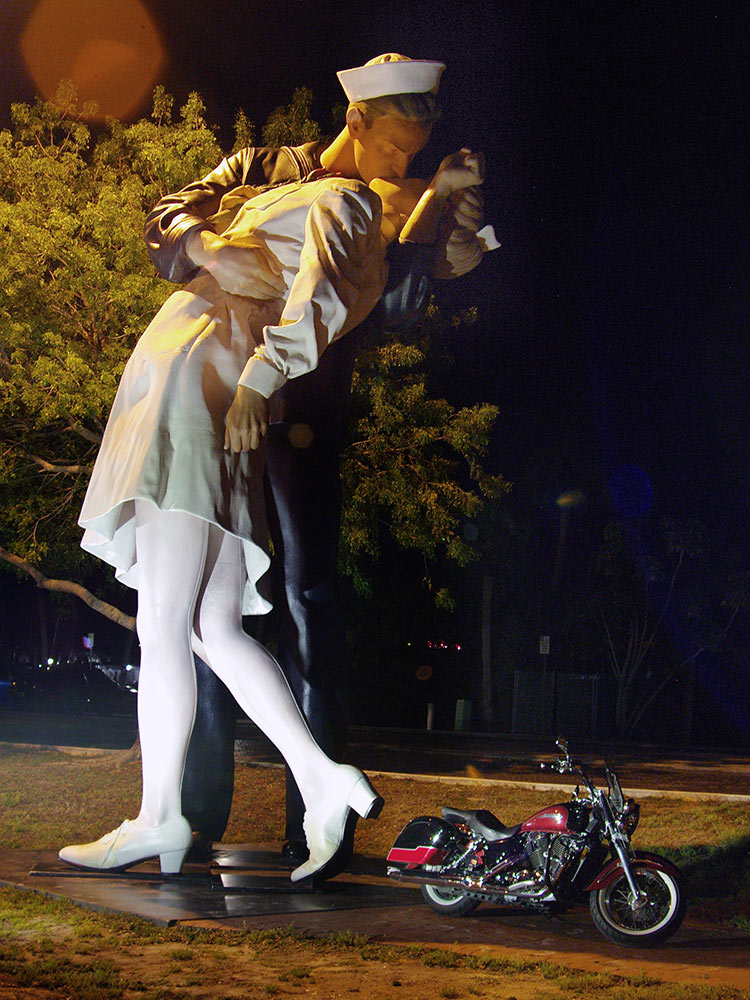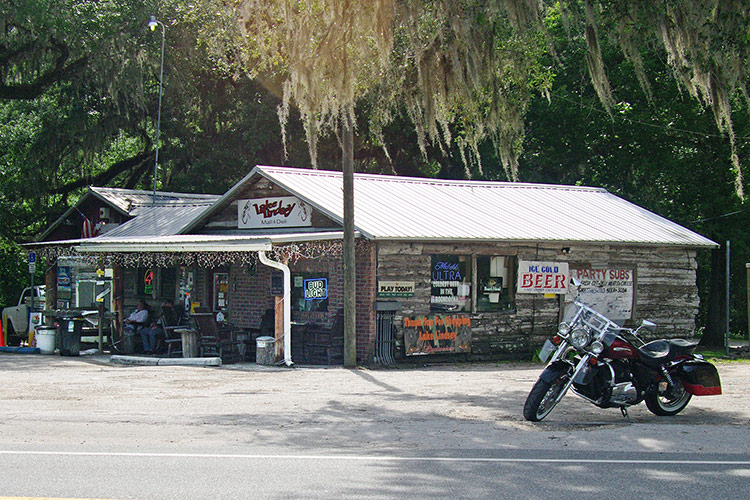Riding Feature
Straight Flat and Hot
Making The Most Of The Florida Roads
By Philip Buonpastore
As a longtime resident of Atlanta, I could find a spectacular motorcycle ride an hour north of the city that offered a seemingly endless number of twisting mountain roads that run along rivers and lakes and are shaded by overhanging trees.
A good autumn season in the Appalachians was the best dream ever, with colors so deep and vivid as to inspire wide-eyed rapture.
Having also lived in the Seattle area for several years, I rode more beautiful Pacific Northwest than one man has a right to expect in a lifetime, from mountains to desert, through island chains, along rivers and ocean highways and through valleys and gorges—all different and spectacular.
In 2015, finding gainful employment in Atlanta seemed a bleak prospect. The effects of the post-2008 meltdown were still being felt, and, like many areas of the country, the economy was struggling. Members of my family had moved to Southwest Florida over time.
And in 2016, the logical choice was to make the move, as well. I joined them as “the last holdout.”
I was glad to be close to family. But, as a motorcycle rider, I very much missed the beauty of the areas I had known. Sometimes a person has to choose to find the best of what is available, though, and, this time, it was Florida. So, what is available?
From my observation, many activities for the motorcycling community in Florida are social gatherings, more than riding events. Typical weekend motorcycling gatherings find riders congregating at what most call a “biker bar” or a dealership, with parking lots filled with classic American V-twins at a ratio of about 90 percent, with hard rock music and beer flowing freely.
If you’re of the type that gravitates toward more invigorating riding, with twisting curves, hills and valleys, finding roads that pique your interest south of Tampa and Orlando requires some studying of the map.
Unless you’re riding over a bridge, finding anything that resembles a hill is a challenge. Britton Hill in the Florida Panhandle is the state’s highest natural point at 345 feet.
But roads with moderate curves that lend a level of excitement to an afternoon ride do exist.
South and Southwest Florida
Routes north and west of Lake Okeechobee, in the areas between Sebring and Zolfo Springs, offer some pleasant open riding, with Sweetwater and Corkscrew Roads throwing in an opportunity for some better-than-average lean angles. Indeed, one or two curves will have you scrubbing off speed in a hurry, if you are caught unawares.
Heading west toward Myakka City is all open Florida ranch land, populated primarily by cattle. While the riding may not be significantly challenging, traffic is virtually absent.
Cruising alongside the Gulf of Mexico is also an appealing afternoon’s ride, but coastal areas south of Tampa have become increasingly crowded with condos, hotels, restaurants, bars and shops. And watch for the beach goers.
There are a few exceptions. Neighborhood streets through waterfront developments—usually only a few miles long—and the large coastal out-islands that have a single connection to the mainland and not to each other provide some great riding and beautiful subtropical scenery.
These include Sanibel-Captiva Island, Pine Island and Boca Grande.
Looking North
The northern half of the state, roughly the area north of Interstate 4, is where a Florida rider can find some interesting locales.
On the western side of the state, north of Tampa and southwest of Ocala, roads transition from flat and straight to moderate hills and winding curves.
The trees turn from scrub pine to live oaks and red maples, with Spanish moss hanging from their branches. The trees create picturesque visuals and offer cooler temperatures on streets.
Small old-Florida towns, such as Brooksville and Chiefland, lend a laid-back earlier-era feel, and the many protected state forests promise challenging rides through undeveloped country.
The 3,000-or-so square miles bordered by Interstate 75 on the east and the gulf on the west between Brooksville and Perry offer the gamut from long straight coastal rides on U.S. Hwy. 98 to virtually countless two-lane county roads through small towns and farmland. Riders find rolling hills and moderate at-speed curves and some challenging twisties, bringing a whole new level of enjoyment to a Florida ride.
East of I-75 north of Orlando, the scenery changes yet again. The area between Orlando and Jacksonville is dominated by lakes and waterways that are bordered by county and local roads with scenic views and winding routes. The terrain has generally returned to sea level, but lake roads in this area will ensure that the tread on the outside edges of your tires will get some use.
Central Florida
In Central Florida, County Road 455 winds along the edge of Lake Apopka, running through the towns Montverde and Ferndale before connecting to County Road 561.
Head north of 561 between Lake Harris and Lake Dora, then take State Route 19 to Eustis. There, cruise Lake Eustis Drive and connect to Lakeshore Drive. The two roads are only 4 miles, combined, but are a beautiful start to the “Land-O-Lakes” ride.
Picking up S.R. 19 again on the north side of Eustis takes you into the Ocala National Forest and past Lake George, with long sections of lightly traveled forested road.
Take U.S. 17 to the east and north past Crescent Lake. Local roads, such as Crescent Lakeshore Drive and Sisco Road around Lake Broward, are excellent detours off the highway.
Both County Road 19 and U.S. 17 lead to the picturesque town of Palatka, a great location for an overnight stay. The town has a riverside park and an old-style clock tower. And there is a great view of the Memorial Bridge over the St. John’s River.
Northeast Florida
County Road 13S from Palatka to Jacksonville along the St. John’s River, is not to be missed.
From Palatka, taking County Road 207 leads to the “blink-and-you’ll-miss-it” town of Spuds, where County Road 13S begins. Then, for 60 leisurely miles, the road winds along the St. Johns River, with live oaks, old cypress trees and overhanging Spanish moss a canopy for many sections of the road.
Roadside stops offer peaceful and serene views of the St. Johns, with stop signs and neighborhood traffic lights few and far between.
One more scenic detour along this route is the western turn immediately after the Julington Creek Bridge along the river on Mandarin Road until it reconnects with C.R. 13S near I-295.
At I-295, options are open. Heading east will take a rider to A1A south of Jacksonville for a spin along the Atlantic Ocean. St. Augustine is the only high-volume area between Jacksonville and Ormond Beach. Heading west from I-295 leads you back into Florida’s back-country riding.
Planning a few days stay in an area north of Tampa or Orlando allows a rider to take in the best of what Florida has to offer. From the Gulf of Mexico, to winding forest roads, lakefront rides and the Atlantic Ocean, riding in Florida’s center offer the best alternatives to “straight, flat and hot.”
And we didn’t even get to the Panhandle.






